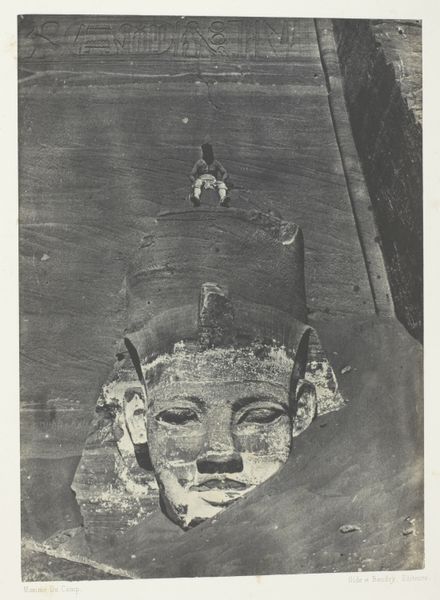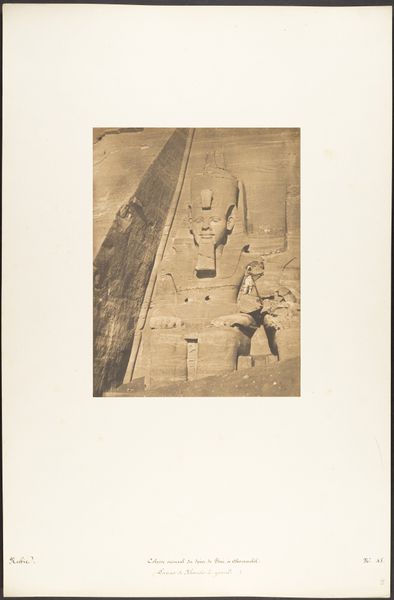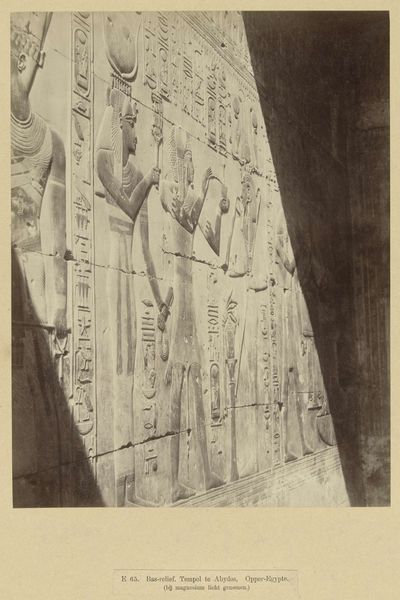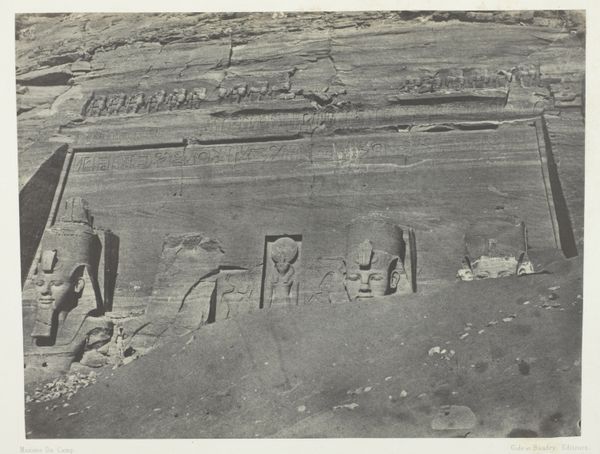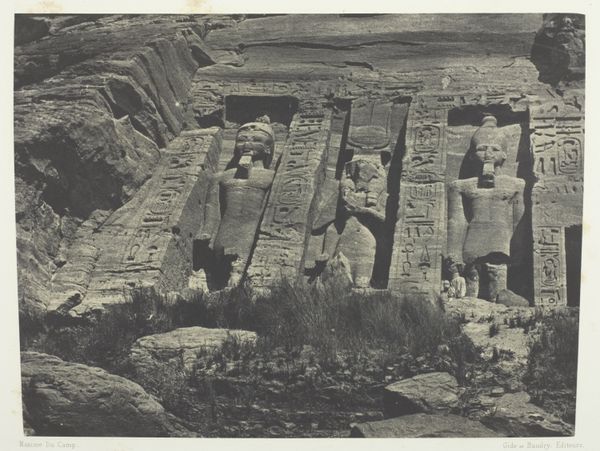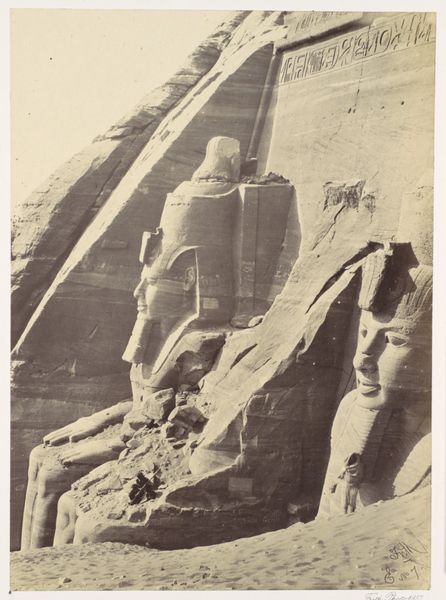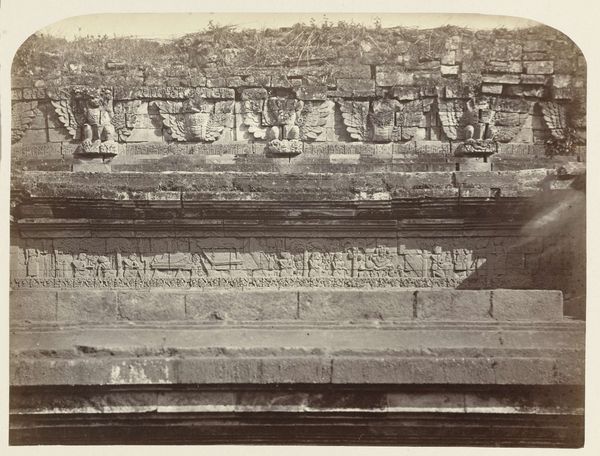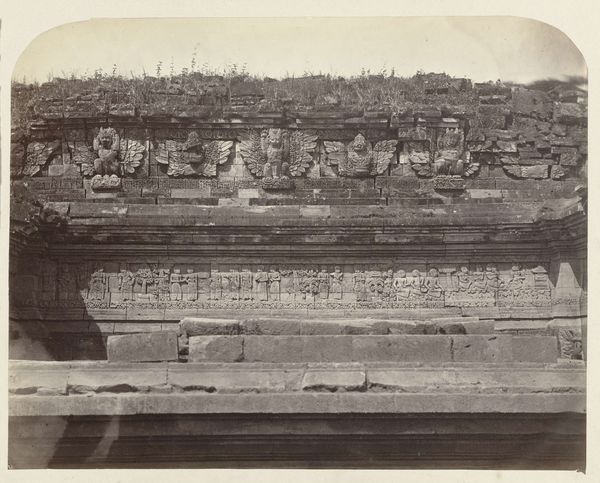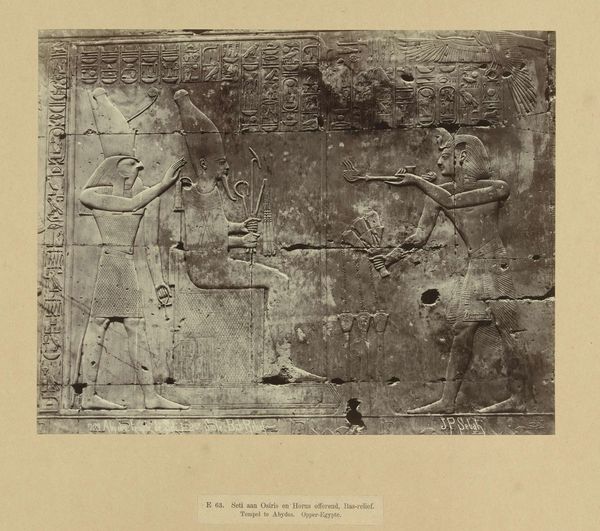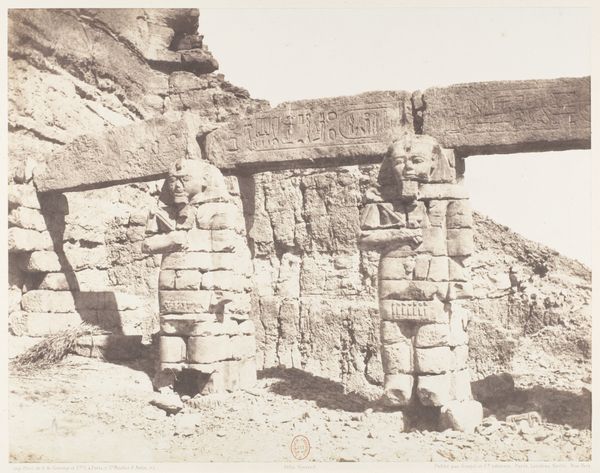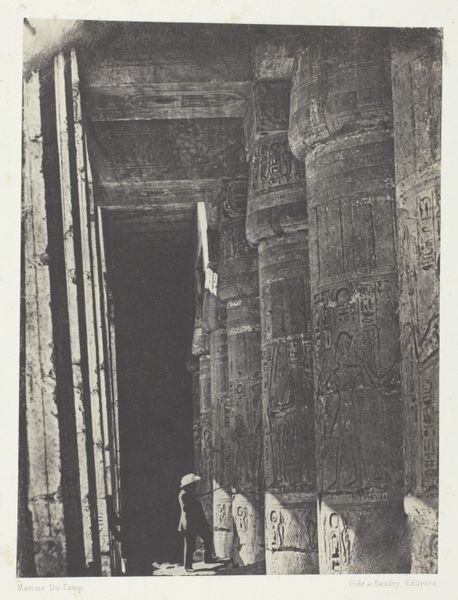
Ibsamboul, Colosse Oriental Du Grand Spéos De Phrè; Nubie Possibly 1849 - 1852
0:00
0:00
print, paper, photography
#
16_19th-century
# print
#
landscape
#
ancient-egyptian-art
#
paper
#
photography
#
egypt
#
ancient-mediterranean
Dimensions: 21 × 16.3 cm (image/paper); 43.1 × 30 cm (album page)
Copyright: Public Domain
Curator: My breath just hitched a little. There's a tangible aura of hushed grandeur radiating from this. Editor: Indeed. What you’re seeing is a photographic print by Maxime Du Camp, entitled "Ibsamboul, Colosse Oriental Du Grand Spéos De Phrè; Nubie". It's believed to have been taken between 1849 and 1852. Curator: That title rolls right off the tongue, doesn't it? But seriously, this image – this captured fragment of some ancient, imposing...thing… radiates an almost unnerving power. The stark contrasts amplify every line, every suggestion of weathering and erosion. Makes me feel… small. Editor: The Temple of Ramses II at Abu Simbel. That colossus is more than just a depiction of a ruler; it’s a symbol of Egypt's eternal aspirations. The very rock from which it’s hewn speaks of permanence, of a civilization striving for immortality. Curator: It's an impressive face. Very...deliberate. What gets me is the implied scale. One has to remember, a photograph shrinks the original. Editor: Think about the colossal statues overlooking you. Du Camp captured a physical location but more importantly, the birth of Egyptology through images. The shadows and textures in the print, it almost feels like Du Camp wrestled this image from time itself. The image isn't just observed but remembered; and experienced, like something ancestral emerging. Curator: Exactly! It’s as if it was plucked from a dream. Editor: Du Camp gives a Western audience the pharaoh, making the ancient accessible to an ever changing modern sensibility, creating collective cultural heritage for Europe. This is a beautiful and imposing representation of cultural power. Curator: Now when I gaze upon it I do see the cultural weight that the piece carries and the long-lasting effect that one artwork can have on future audiences. Editor: It certainly puts it all in perspective, doesn’t it?
Comments
No comments
Be the first to comment and join the conversation on the ultimate creative platform.
